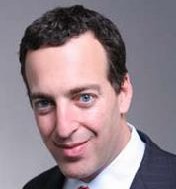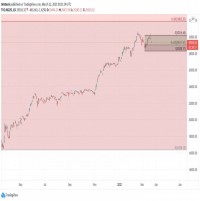|
The High-Frequency Artist There is a high barrier to entry, but there is an even higher barrier to long-term survival in the high-frequency space. Short-term trading is not easy to understand and we can infer that it is extremely hard to practice, because few people engage in it and even fewer survive for a long time. We are delighted to present a practitioner with one of the most distinguished and substantial track records in this intriguing niche strategy. R. G. Niederhoffer Capital Management offers hedging in the original sense of protecting investor portfolios in downturns. One trading program has the specific goal of hedging a portfolio against equity market and fund of fund losses. That program returned 55% in 2008. Founder Roy Niederhoffer possesses diverse skills that are seldom found in one person. In his office there is a wall of computer screens with fast-changing symbols and numbers, but also two surprising objects: a violin and a piano. He's been playing since childhood and is a serious enough musician to play violin in the Park Avenue Chamber Symphony (www.chambersymphony.com). But music was only one of his youthful interests. He encountered computers as a teen when his brother Victor, whose ups and downs as a fund manager are well known asked him to help unpack one of the early microcomputers. Roy immediately took to the computer. Within a year he wrote a video game, started a computer game business and had his high school friends working for him, creating games. It says something about short-term trading that the strategy brought together Mr. Niederhoffer's diverse skills. Below he tells us his story and discusses the high-frequency approach. In the Futures Lab article that follows, his colleague Susan Roberts compares high-frequency trading to other strategies and presents evidence. Opalesque Futures Intelligence: How did you get into short-term trading? Roy Niederhoffer: I studied computational neuroscience at Harvard and planned to go into that field. But in 1987, my brother Victor invited me to join him, and from 1987 to 1992 I worked for his firm. He was an early innovator in the high-frequency trading space and trained a number of successful managers. While I was there, I developed computer programs to analyze high frequency price data and used them to develop and test my trading ideas. In 1992, I left to start my own firm, with the goal of building an institutional, highly-quantitative asset management business. I had already run a successful 30-person computer game development business in high school, so I had some useful experience being an entrepreneur. OFI: Did your interest in the brain science have any effect on your career? RN: In time I realized that there is an overlap between my interests in neuroscience and in trading. The structure of the brain drives behavior, including market behavior, in predictable ways. Understanding that helped me refine my trading approach. OFI: Do those behavioral patterns show up in futures trading? RN: Definitely. My early forays into trading were quite discretionary and not very successful. I fell into many trapsholding losing trades too long, being emotional about my decisions, letting recent experience influence me too much. Our strategy now is based on the idea that because of certain cognitive biases hard-wired into the human brain, the behavior of market participants, and therefore prices, can be predicted. OFI: How can you predict what people will do? RN: When people are emotional, they revert to instinctive behavior patterns that result in non-random price movements. Our research attempts to identify those situations and capitalize on them. OFI: For how long a period can you predict? RN: It is much easier to forecast prices in the short-term than, say, a year from now. We do have some accuracy at predicting what will happen in the next hour or day, perhaps out to a week or two. We test rules with hundreds of thousands of individual observations, so we have a moderate-to-high degree of confidence in the rules that make it all the way through our trading process. OFI: How long do you hold positions? RN: Our trades range from a few minutes to a few weeks in duration, but our effective duration is about one or two days. Economic fundamentals tend to be swamped by psychological factors in the short-termthere are waves of exuberance or panic that drive markets up or down, and we take advantage of that. But psychology can't swamp fundamentals indefinitely and eventually prices reflect fundamentals relatively accurately. OFI: Don't some trend followers look for similar patterns? RN: The rationale for our trade entries and exits tend to be different from trend-following, so our results are different. We are very comfortable taking positions opposite the trend.OFI: Do you trade the same instruments as commodity trading advisors? RN: We trade many of the same markets as trend followers, but like many short-term traders we are generally more focused on the equity sector. Historically, trend-followers have had greater allocations to fixed income, foreign exchange and commodities than most short-term traders, who tend to trade a higher percentage of equity index futures. OFI: Why equities? Foreign exchange markets must be liquid enough for short-term trading. RN: Since our strategy attempts to capture the effects of human emotion on price movements, it stands to reason that it might be more successful in a sector like equities where there is a higher percentage of retail money, than, say, foreign exchange. But we believe our models should be successful in that sector as well. OFI: Why are there so few high-frequency traders? RN: It is a difficult strategy to get started in. We have maybe a million lines of proprietary computer code that we've developed over the years. There are many dead ends and pitfallswe managed to fall into them particularly in our early years. After 16 years in the business, we've learned many of the things to avoid! A newcomer starting from scratch has a lot to learn. There is a high barrier to entry, but there is an even higher barrier to long-term survival in the high-frequency space. OFI: If more money comes in, will short-term trading become crowded? RN: Capacity constraints are an issue in any strategy, but obviously high-frequency managers are more susceptible because of their higher volumes. Since our strategy is more than 50% mean reversion, we end up doing the opposite of the majority of managers, so crowding is less of an issue. In addition, short-term traders are much less similar to each other than managers in other strategies, possibly because there many ways to trade, not just a few trends to follow. But it is still very important for a short-term manager not to get too big. That's probably the reason there are no giant short-term funds. To go from, say, $2 billion to $20 billion would be almost impossible with this kind of trading. It is extremely important for a short-term manager not to compete for assets by offering lower feesthe greatest cost to a client of a short-term trader is the other assets managed by that trader, not the manager's fee. It's not just beneficial to the manager to have higher fees and less assets under management; it's better for the clients too, because the market impact of a smaller manager is so much less. A lot of people don't realize that. OFI: How do you control the risk? RN: Everything we do can be calibrated to the volatility of the market we're trading and its relationship to other markets. This is so for all CTAs but particularly for short-term traders, who can keep their volatility stable over time perhaps better than any other hedge fund strategy. Because your trades last only a few days and you have so many positions, you can adjust to any change in volatility daily or even intra-day. Risk management is not separate from our process, it is integrated into our process. Our quantitative models incorporate factors like historical and implied volatility, correlation, and expected trade duration in determining the size and risk of our trades. OFI: Isn't short-term trading volatile relative to other strategies? RN: You rarely see surprises from managers in high-frequency trading. Many hedge fund styles have low volatility most of the time, and then, as in 2008, volatility suddenly explodes. While people may think of managed futures as a relatively volatile strategy, actually managed futures is merely a strategy with consistent volatility. Almost every CTA, both short-term and long-term, had about the same volatility in 2008 as they did in 2007, 2006, and 2005. Moreover, when you have a strategy like ours that is negatively correlated to most portfolios in which it is included, the more volatility you have, the less overall risk the portfolio can have. OFI: What do you see for the future? RN: You have to be constantly vigilant and constantly develop your system, because markets evolve and some trading strategies stop working. We have 21 people working on developing new models and trade execution strategies. Including the technology people, 31 out of the 41 people at the firm work on investment strategy. I'm now more involved with the research than the trading. On a daily basis, the strategy is run by my head trader, who has been with me since 1993. OFI: Is trade execution difficult with a high-frequency strategy? RN: Trade execution is done automatically, by algorithms. Very little is done on a discretionary basis. Nevertheless, it is important to have an experienced person reviewing trades just in case there is an unusual event, like a surprise event or a particularly illiquid period. Because of this consideration we are about 5% discretionary. OFI: Why should an investor consider a high-frequency strategy? RN: Most hedge fund styles are highly correlated with one another, and also to the portfolios in which they are included. In contrast, high-frequency traders tend to be different from each other have low inter-manager correlation and also tend to have fairly consistent negative correlation to investors' portfolios. As a result, they tend to fit very well. We actively aim our strategy to directly improve our clients' portfolios by focusing not only on making money but on when we make money. OFI: What should investors look for when evaluating managers? RN: One way to assess managers is to look at their performance during benign and difficult periods. It was much easier to be up in 2005 and 2006 than in 2008. My view is that a hedge fund should be able to provide a true diversification during difficult periods, so I feel that if you have two funds with the same stand-alone return and volatility, the fund that had its best year in 2008 is far preferable than one that was down in '08 and had its best year along with everyone else in 2005. |
|
This article was published in Opalesque Futures Intelligence.
|





 RSS
RSS












